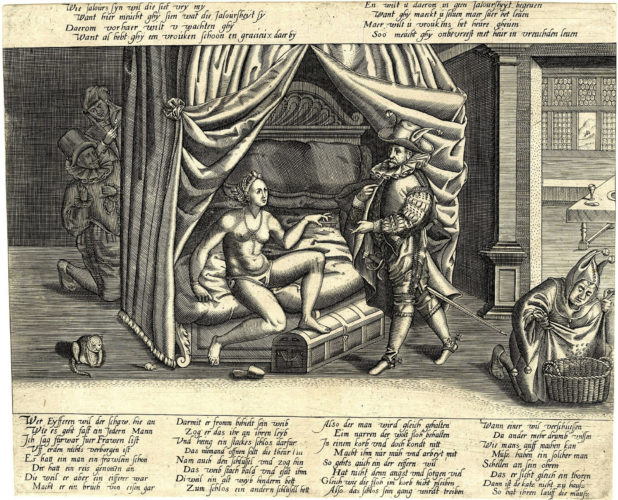In this satirical print, which exists in a number of versions from the sixteenth and seventeenth centuries, a woman hands the key to her chastity belt to her richly dressed husband. An analogy is drawn between the household wealth contained in the locked chest, on which her foot rests, and the wife’s chastity. However, behind the bed another man holds out a bag of money in exchange for a duplicate key held out by the female servant. Visually, the shape of the parted curtains on the bed counteracts the currently closed triangle of the chastity belt. The donkey’s ears on the husband’s hat connect him to the fool in the corner who is trying to keep lice in a basket. In the other corner, a cat watches a mouse, recalling the proverb: ‘While the cat’s away...’
The scene is accompanied by two sets of verses, one in Dutch (above) and one in German (below), which give strikingly different interpretations of the moral lesson to be derived from it. The German verses take a predictably misogynistic view: the husband is a fool to think he can preserve his wife’s virtue, because all women are cunning and licentious. The Dutch verses, on the other hand, locate the fault in the man’s jealousy, which, they imply, is the cause of the errancy of his wife: if men give wives their due, the verses conclude, they will not have to fear this sort of thing.
Click on the chastity belt to find out more.












